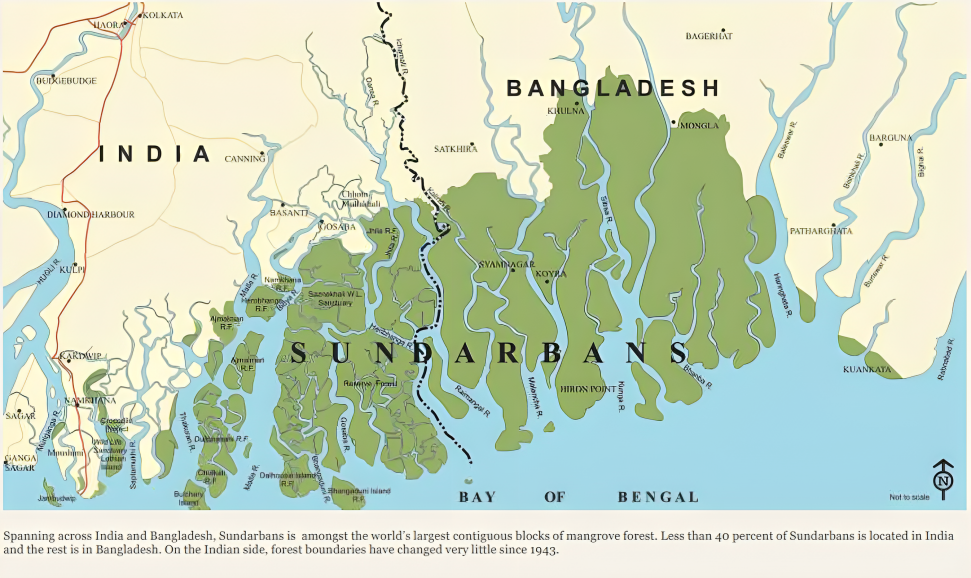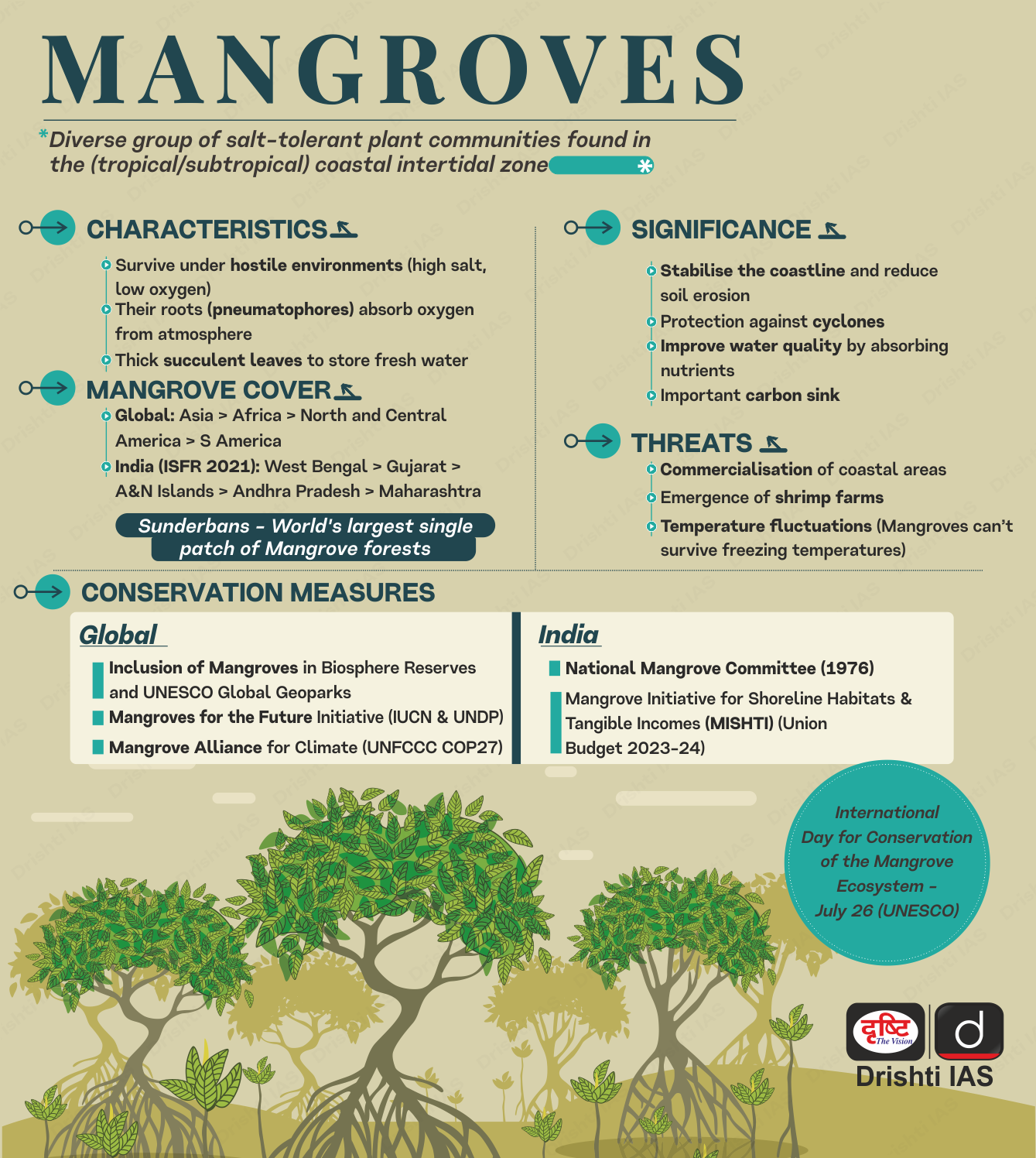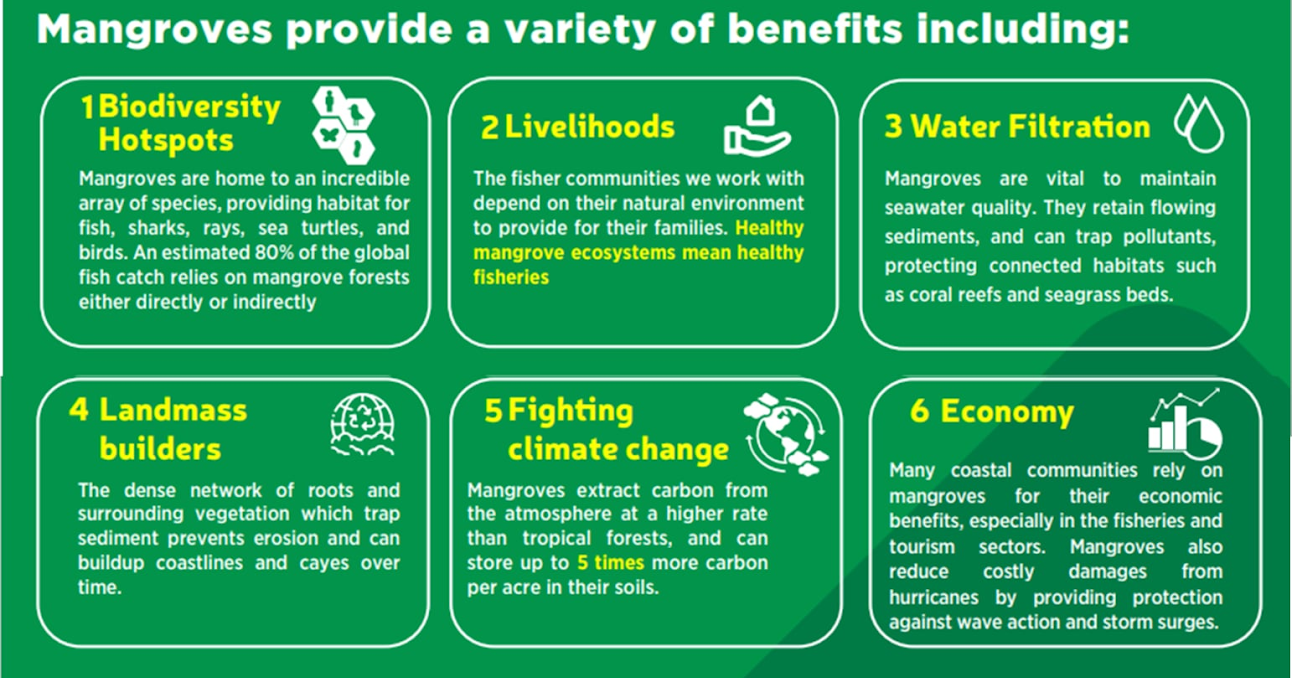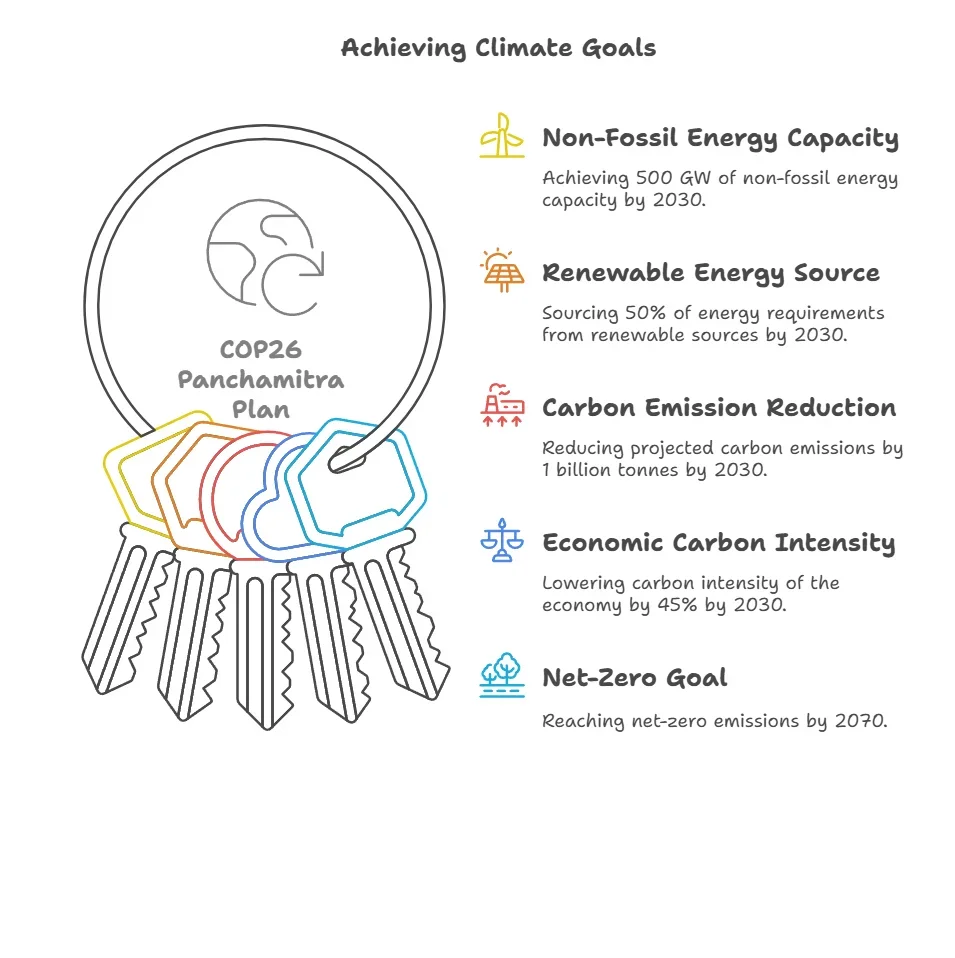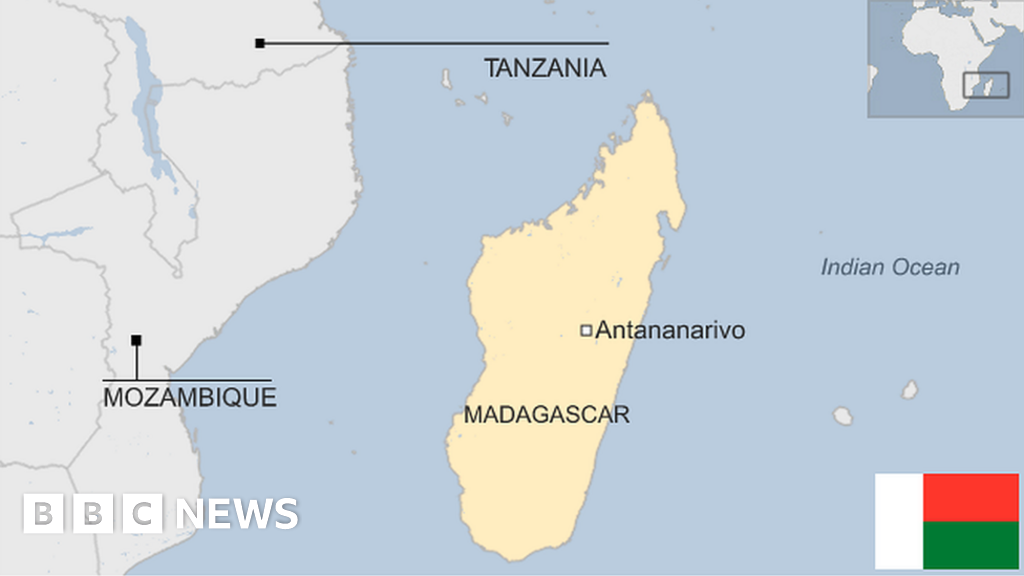Facts for UPSC Mains
Sundarbans’ SAIME Model Wins FAO Global Recognition
Why in News?
Sustainable Aquaculture in Mangrove Ecosystems (SAIME) model developed by the Nature Environment and Wildlife Society (NEWS) in West Bengal’s Sundarbans has been conferred Global Technical Recognition by the Food and Agriculture Organization (FAO) of the United Nations.
What is the SAIME Model?
- About: It is a community-based initiative in the Sundarbans, West Bengal, that aims to balance mangrove conservation with aquaculture-based livelihoods.
- Under this model, 5–30% of aquaculture pond areas are kept under mangrove cover, protecting the ecosystem while supporting fish and shrimp farming.
- Farmers use mangrove litter as natural fodder for the Black Tiger Shrimp (Penaeus monodon), a high-value species traditionally farmed in the region, thereby reducing dependence on chemical inputs.
- The approach promotes climate-adaptive aquaculture, helping farmers increase profits and strengthen coastal resilience against sea-level rise and erosion.
- Impact: The SAIME Model has doubled farmers’ annual net profits by cutting down on production costs.
- The SAIME approach is climate-adaptive, addressing the threats of sea-level rise and salinity intrusion in the deltaic Sundarbans.
- Mangroves integrated into ponds act as natural carbon sinks, aiding carbon sequestration and mitigating local climate impacts.
- By balancing economic needs with environmental responsibility, it demonstrates a scalable solution for coastal livelihood resilience.
- The model contributes directly to global climate goals under the FAO’s sustainable food systems and ecosystem restoration frameworks.
Sundarbans
- Geographical Distribution: The Sundarbans hosts the largest mangrove forests in the world, located on the delta of the Ganges, Brahmaputra, and Meghna rivers along the Bay of Bengal.
- It is a unique mangrove ecosystem that lies between land and sea, consisting of a mosaic of islands constantly shaped by tidal waters, and is spread across India and Bangladesh in tropical and subtropical zones.
- Biological Landscape:
- Flora: Dominated by Heritiera fomes (sundari), Excoecaria agallocha (gewa), Ceriops decandra (goran), and Sonneratia apetala (keora).
- Salinity increase is replacing tall trees with dwarf species, changing forest structure.
- Fauna: Bengal tiger, Gangetic and Irrawaddy dolphins, estuarine crocodiles, and olive ridley turtles.
- Ecological Role: It acts as a nursery ground for fish, crabs, and shrimp; mangroves buffer coasts against storms and store carbon.
- Flora: Dominated by Heritiera fomes (sundari), Excoecaria agallocha (gewa), Ceriops decandra (goran), and Sonneratia apetala (keora).
- Socio-Economic Landscape:
- Livelihoods: More than 12 million people (4.5 million in India and 7.5 million in Bangladesh) live in this estuarine ecosystem.
- Cultural Harmony: Traditional beliefs, folklore, and rituals emphasize respect for nature, e.g., Bonbibi worship symbolizes coexistence between humans and wildlife.
- Protection:
- The Sundarbans was designated a UNESCO World Heritage Site in 1987 in India and 1997 in Bangladesh.
- Sundarban Wetland (India) was declared a Wetland of International Importance under the Ramsar Convention in 2019.
- India–Bangladesh MoU (2011) was signed to promote joint conservation and monitoring of the Sundarbans’ shared ecosystem.
- The Sundarbans Biosphere Reserve (BR) includes multiple national parks and wildlife sanctuaries, such as:
- Sundarbans National Park (India)
- The Sundarban Wildlife Sanctuaries in Bangladesh are part of a large mangrove forest.
- Sundarbans Reserve Forest (Bangladesh)
What is the Significance of Mangroves?
- Carbon Sequestration: Mangroves are powerful blue carbon sinks, storing tonnes of carbon per hectare due to slow decomposition in their saline, oxygen-poor soils.
- Coastal Protection: They act as natural barriers against storms, tsunamis, and erosion reducing wave energy by 5–35% and flood depths by up to 70%, safeguarding coastal communities.
- Biodiversity Hotspots: Home to over 5,700 species in India mangroves are vital for ecological balance.
- Mangroves support global fisheries, nurture marine species, and provide honey, fruits, and leaves, sustaining millions of coastal livelihoods.
What are the Major Threats and Conservation Strategies for India's Mangrove Ecosystem?
|
Aspect |
Threat |
Conservation Strategy |
|
Land Conversion |
Large-scale clearing of mangroves for aquaculture, oil palm, and rice cultivation has led to significant loss of mangrove cover. |
Enforce stricter coastal zoning and land-use regulations. Integrate mangrove buffers in coastal development plans. |
|
Timber Extraction & Charcoal Production |
Unsustainable logging and wood harvesting degrade mangrove ecosystems, reducing biodiversity and carbon sequestration capacity. |
Promote alternative livelihoods for local communities. Strengthen enforcement under the Forest Conservation Act, 1980. |
|
Pollution |
Oil spills, industrial effluents, and plastic waste hinder mangrove regeneration and soil quality. |
Implement phytoremediation and cleanup drives. Impose strict liability for oil and chemical spills. |
|
Invasive Species |
Species like Prosopis juliflora outcompete native flora, alter soil salinity, and obstruct mangrove regeneration. |
Use bio-restoration methods and native species replantation for protecting the native species. |
|
Climate Change & Sea-Level Rise |
Increased salinity, coastal erosion, and submergence threaten mangrove habitats. |
Strengthen Blue Carbon Initiative participation. Build climate-resilient mangrove belts. |
Conclusion
The SAIME model shows how mangrove conservation and aquaculture can coexist, boosting livelihoods and climate resilience. It reduces carbon emissions while protecting coastal ecosystems and promoting sustainable and inclusive growth.
|
Drishti Mains Question: How does the SAIME model in the Sundarbans integrate livelihood security with mangrove conservation? |
Frequently Asked Questions (FAQs)
1. What is the SAIME model?
The Sustainable Aquaculture in Mangrove Ecosystems (SAIME) is a community-based initiative in the Sundarbans that balances mangrove conservation with aquaculture livelihoods.
2. Which species is primarily farmed under SAIME?
Black Tiger Shrimp (Penaeus monodon) is the main species, with mangrove litter used as natural fodder, reducing chemical inputs.
3. What is the geographical spread of the Sundarbans?
The Sundarbans spans India and Bangladesh, forming the largest mangrove forest on the delta of the Ganges, Brahmaputra, and Meghna rivers, covering 10,000 km².
UPSC Civil Services Examination, Previous Year Question (PYQ)
Prelims:
Q. Consider the following protected areas: (2012)
- Bandipur
- Bhitarkanika
- Manas
- Sundarbans
Which of the above are declared Tiger Reserves?
(a) 1 and 2 only
(b) 1, 3 and 4 only
(c) 2, 3 and 4 only
(d) 1, 2, 3 and 4
Ans: (b)
Mains
Q. Discuss the causes of depletion of mangroves and explain their importance in maintaining coastal ecology. (2019)


Facts for UPSC Mains
India-Australia Clean Energy Partnership
Why in News?
Australia is engaging with India at a crucial time as both nations aim to achieve ambitious renewable energy goals while reducing reliance on China for critical materials amid global supply chain vulnerabilities.
What is the Need to Scale Up Australia-India Clean Energy Partnership?
- Climate Change in the Indo-Pacific Region: The Indo-Pacific faces grave climate risks, averaging 10 climate disasters per month (1970–2022), with up to 89 million displaced and 80% of the population affected by 2050.
- Overdependence on China: China dominates critical materials, refining over 90% of rare earth elements and producing 80% of global solar modules.
- Renewable Energy Partnership (REP): Launched in 2024, REP outlines cooperation across eight areas—solar PV technology, green hydrogen, energy storage, solar supply chains, circular economy in renewables, two-way investment, capacity building, and other shared priorities.
- It also introduces a Track 1.5 Dialogue to connect policymakers, industry, and research institutions for practical collaboration.
- Clean Energy Supply Chain: Australia provides critical minerals and regulatory stability for co-investment in refining and processing, while India offers scale, a skilled workforce, and market demand for solar, storage, and hydrogen backed by Skill India and Production Linked Initiative (PLI) schemes.
- Together, they can create a resilient, regionally anchored clean energy ecosystem.
- Shared Climate Ambitions: India targets 500 GW of non-fossil capacity by 2030, including 280 GW from solar, while Australia aims for a 62–70% emission reduction by 2035, aligned with its net-zero goals.
What are India's Strategic Global Partnerships for Clean Energy Transition?
- India–EU Clean Energy and Climate Partnership (CECP): Established in 2016, this partnership supports joint projects in offshore wind, solar parks, smart grids, energy storage, biofuels, green hydrogen, and efficiency in buildings.
- US-India Strategic Clean Energy Partnership (SCEP): Focuses on advancing clean energy supply chain, research and development, deployment of solar, wind, batteries, energy grid systems, and clean-tech manufacturing.
- Green Fuels Alliance India (GFAI) with Denmark: Denmark launched GFAI to strengthen cooperation on sustainable energy solutions and advance the shared goal of carbon neutrality, focusing on green fuels like green hydrogen.
- Global Biofuels Alliance: It was launched in 2023 at the G20 Summit in New Delhi by India and leaders from the USA, Brazil, Italy, Argentina, Singapore, Bangladesh, Mauritius, and the UAE to promote sustainable biofuels.
Renewable Energy in India
- Renewable Energy Capacity: As of March 2025, the total renewable energy (RE) capacity has reached 220.10 GW, up from 198.75 GW the previous year.
- Sectoral Breakdown:
- Solar Energy: The total installed solar capacity now stands at 105.65 GW, with 23.83 GW added in FY 2024–25, making solar the largest contributor to the year’s capacity expansion.
- Wind Energy: The total cumulative installed wind capacity now stands at 50.04 GW, with 4.15 GW of new capacity added in 2024–25.
- Bioenergy: Bioenergy installations reached a total capacity of 11.58 GW, including 0.53 GW from off-grid and waste-to-energy projects.
- Small Hydro Power: Small Hydro Power projects have reached a capacity of 5.10 GW, with an additional 0.44 GW under implementation.
- India’s Panchamitra Plan:
|
Drishti Mains Question: Discuss the significance of the India-Australia Renewable Energy Partnership in addressing climate change and supply chain vulnerabilities. |
Frequently Asked Questions (FAQs)
1. What is the India-Australia Renewable Energy Partnership (REP)?
REP is a bilateral initiative launched in 2024 focusing on solar PV, green hydrogen, energy storage, and capacity building to strengthen clean energy collaboration.
2. What is the status of renewable energy capacity in India?
Total capacity reached 220.10 GW, with solar at 105.65 GW, wind at 50.04 GW, bioenergy at 11.58 GW, and small hydro at 5.10 GW.
3. Why is overdependence on China a challenge for India and Australia?
China refines over 90% of rare earth elements and produces 80% of global solar modules, creating risks in EV, wind, and solar sectors for both countries.
UPSC Civil Services Examination, Previous Year Questions (PYQs)
Prelims
Q. Which one of the following is the purpose of ‘UDAY’, a scheme of the Government? (2016)
(a) Providing technical and financial assistance to start-up entrepreneurs in the field of renewable sources of energy
(b) Providing electricity to every household in the country by 2018
(c) Replacing the coal-based power plants with natural gas, nuclear, solar, wind and tidal power plants over a period of time
(d) Providing for financial turnaround and revival of power distribution companies
Ans: (d)
Mains
Q. “Access to affordable, reliable, sustainable and modern energy is the sine qua non to achieve Sustainable Development Goals (SDGs)”.Comment on the progress made in India in this regard. (2018)
Q. Write a note on India’s green energy corridor to alleviate the problem of conventional energy. (2013)


Important Facts For Prelims
Tomahawk Missiles
Why in News?
The U.S. President has indicated that Washington may consider supplying long-range Tomahawk cruise missiles to Ukraine if Russia does not undertake credible measures to de-escalate the ongoing conflict.
What are Tomahawk Missiles?
- About: The Tomahawk is a long-range, all-weather, subsonic cruise missile. It can be launched from ships and submarines for precision strikes on high-value or heavily defended targets.
- The missile’s low-altitude flight path and advanced guidance systems allow it to evade radar and navigate complex terrain.
- Propulsion: The missile fires a solid propellant at launch, then runs on a turbofan that emits minimal heat, so it’s hard to spot with infrared sensors.
- Guidance Systems: Uses GPS, Inertial Navigation System (INS), TERCOM (terrain mapping), and DSMAC (digital scene matching) for high precision.
- Modern variants allow mid-flight reprogramming, enabling real-time target adjustments or mission aborts.
What is the Difference Between a Cruise Missile and a Ballistic Missile?
|
Parameter |
Cruise Missile |
Ballistic Missile |
|
Trajectory |
Follows a comparatively straight and controlled trajectory. |
Travels in a projectile path; trajectory depends on gravity, air resistance, and Coriolis Force. |
|
Flight Path |
Remains within the Earth’s atmosphere throughout its flight. |
Leaves the Earth’s atmosphere and re-enters it. |
|
Range |
Short-range missile |
Long-range missile |
|
Indian Examples |
Prithvi I & II, Agni series, Dhanush. Shaurya, K-15 (Sagarika), K-4 (Submarine-launched). |
|
|
Global Examples |
Tomahawk (USA), Kalibr (Russia), CJ-10 (China), Babur (Pakistan). |
Minuteman III (USA), DF-41 (China), RS-24 Yars (Russia), Shaheen-II (Pakistan). |
Frequently Asked Questions
1. What are Tomahawk missiles and who uses them?
Long-range, subsonic cruise missiles used by US, UK, Australia; launched from ships/submarines for precision strikes on high-value targets.
2. What are the key features of cruise missiles?
Fly within the atmosphere, guided, subsonic or supersonic, powered throughout, highly accurate, range up to ~2,000 km, carry conventional or nuclear warheads.
3. What are the key features of ballistic missiles?
Follow a parabolic trajectory, exit and re-enter the atmosphere, long-range (300–12,000 km), less accurately, carry conventional or nuclear warheads.
UPSC Civil Services Examination Previous Year Question (PYQ)
Q. Consider the following statements : (2023)
- Ballistic missiles are jet-propelled at subsonic speeds throughout their flights, while cruise missiles are rocketpowered only in the initial phase of flights.
- Agni-V is a medium-range supersonic cruise missile, while BrahMos is a solid-fuelled intercontinental ballistic missile.
Which of the statements given above is/are correct?
(a) 1 only
(b) 2 only
(c) Both 1 and 2
(d) Neither 1 nor 2
Explanation: (d)
Q. What is “Terminal High Altitude Area Defense (THAAD)”, sometimes seen in the news? (2018)
(a) An Israeli radar system
(b) India’s indigenous anti-missile programme
(c) An American anti-missile system
(d) A defence collaboration between Japan and South Korea.
Ans: (c)


Rapid Fire
Indigenous Military Combat Parachute System
The Defence Research and Development Organisation (DRDO) has successfully tested the indigenously developed Military Combat Parachute System (MCPS) from a record altitude of 32,000 feet, marking a major milestone in indigenous defence innovation and self-reliance.
- Development: MCPS is developed by DRDO’s Aerial Delivery Research & Development Establishment (Agra) and Defence Bioengineering & Electromedical Laboratory (Bengaluru).
- High-Altitude Capability: It is the only parachute system in operational use by the Indian Armed Forces capable of functioning above 25,000 feet.
- Navigation Security: Integrated with Navigation with Indian Constellation (NavIC), MCPS provides secure, interference-free operations and resilience against external jamming or denial-of-service threats.
- Advanced Features: Designed with a lower descent rate, superior steering control, accurate navigation, and pre-determined landing zone deployment, ensuring greater paratrooper safety and mission efficiency.
- Strategic Importance: MCPS enhances operational autonomy, reduces dependency on foreign systems, and ensures quicker maintenance turnaround during wartime or emergencies.
| Read more: Empowering India's Defence Sector |


Rapid Fire
Green Crackers
The Supreme Court of India has relaxed the year-long blanket ban on fireworks in Delhi-NCR, allowing the sale and use of green crackers approved by National Environmental Engineering Research Institute (NEERI) and Petroleum and Explosives Safety Organisation (PESO) during Deepavali 2025.
- The court called it a “test case” to balance festivals with pollution control, noting blanket bans led to smuggling and use of harmful fireworks.
- Green Crackers: Designed to reduce air pollution by modifying traditional formulations. They achieve this through smaller shell sizes, elimination of ash, reduced raw material use, and addition of dust suppressants.
- They ensure at least 30% reduction in particulate matter (PM) or 20% PM reduction plus 10% reduction in gaseous emissions (SO₂ and NO₂) compared to conventional crackers.
- Green crackers can be of two types:
- Improved Fireworks: Modified existing crackers with cleaner compositions.
- New Formulation Fireworks: Developed with new materials and compositions to further cut emissions.
- In Arjun Gopal vs Union of India (2018), the Supreme Court banned non-certified firecrackers with barium salts and allowed only PESO-approved green crackers meeting reduced-emission standards.
| Read more: Green Crackers |


Place In News
Madagascar
Madagascar's armed forces have taken control of the government, ousting the incumbent President following a youth (Gen Z) led rebellion over economic crises and governance failures. It has experienced frequent military-backed power shifts since 1960, with the last major unrest in 2009.
- About: It is an island nation in the Indian Ocean, bordered by the Mozambique Channel to the west and neighboring Comoros, Réunion islands, and Mauritius.
- Geography: The 4th-largest island in the world, it features lush rainforests, dry deserts, grassy plains, and coastal coral reefs and mangrove forests.
- Nature & Wildlife: Nearly 90% of flora and fauna are endemic, due to ocean isolation.
- Famous species: Lemurs (including silky sifakas and aye-ayes), giant leaf-tailed geckos, spider tortoises, Dumeril's boas, Madagascan plovers.
- Marine life: Humpback whales and pygmy blue whales along coasts.
- National tree: Baobab tree, notable for water-storing trunk.
- History: France invaded Madagascar in 1883, making it a colony in 1896. After the 1947 Malagasy Uprising, the island gained independence in 1960.
- People & Culture: About 80% of the population depends on agriculture, growing coffee, vanilla, and sugarcane, with rice as the staple food.
- Music is important in its culture, with the valiha, a tube zither made from bamboo, as the national instrument.
| Read More: Humanitarian Assistance to Drought-Hit Madagascar |



